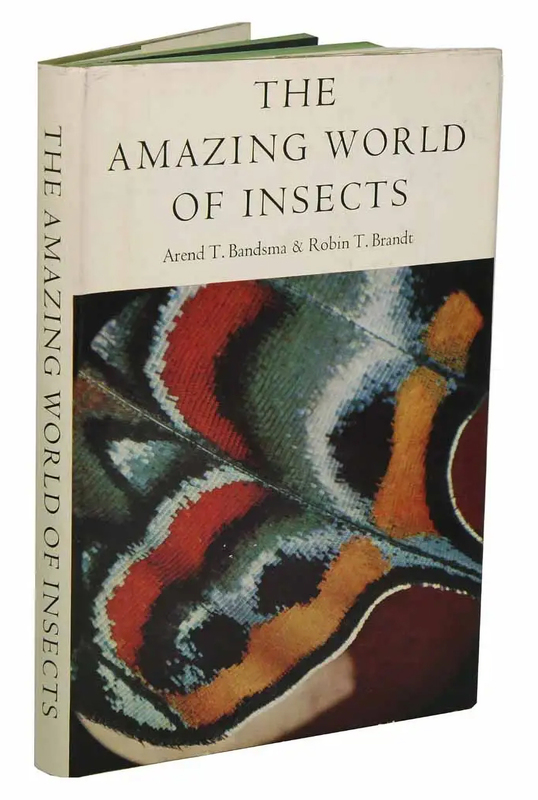The Amazing World of Insects
Title
Description
The authors, two New Zealand school teachers, intend this book to be "an introduction to the fascinating world of insects." It is not the way I would choose to introduce anyone to insects; I would prefer direct observation and collection of insects in the field, study in the laboratory with the help of a systematic, well-illustrated textbook, and an instructor for guidance in both field and laboratory. It seems to me that the present unsystematic book, featuring photographs of living insects in their natural environments, is not a primary source of information about insects, but rather a secondary source, of interest to all who are already familiar with insects, and of particular interest to those who have tried to photograph living, unchilled, and unanesthetized insects – that is, insects ready to jump, run, or fly.
Although examples are pictured in the principal orders of insects, many families are not represented. The authors have obviously selected their most spectacular pictures for publication. Plates 39 and 41 of a leaf insect Ex-tatosoma tiaratum are the most fantastic I have ever seen, and I marvel at the success of the authors in taking a frontal close-up of the face of a dragon fly (plate 11). The statistics of the pictures follow: 134 illustrations on 125 pages; 17 in color, 117 black and white; 96 of whole insects, 34 of parts of insects (enlarged), 4 of other arthropods; of the insects there are shown 106 adults, 21 immature forms, and 3 eggs. The place where each photograph was taken is not given, but it appears that most of the insects were natives of New Zealand, Australia, and Spain.
Therefore the book will not help those who want to identify American insects; nor would it be of much value in economic entomology anywhere. Although they are not professional entomologists, the authors attempt in 46 pages of text to characterize the orders and some of the families of insects represented in the photographs. I do not recommend study of the text; it is too brief to be meaningful. It would have been better, I think, if the authors had referred serious students to standard textbooks and had used the available text space to describe their adventures in finding and photographing their insect game. One can imagine that, in addition to their interesting description of their acquisition of bedbugs in Spain (page 24), they have a store of fascinating untold stories.
If this book is not all that the authors wanted it to be, it is still a great collection of insect portraits and should be commended as such.
– FRANK L. CAMPBELL
National Academy of Sciences
National Research Council
Washington, D.C.

